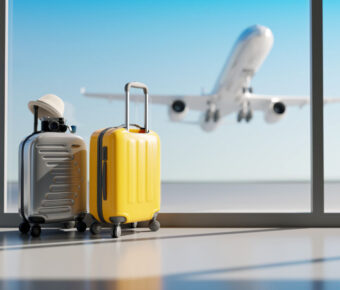
Carbon Offset Programs for Airlines Compared: 7 Surprising Differences Every Traveler Should Know
Ever get that uneasy feeling when you book a flight and wonder just how much your trip is dinging the planet? Trust me, you’re not the only one. These days, most major airlines have carbon offset programs, so you can try to balance out your flight’s emissions and make eco-friendly choices—at least in theory. But honestly, not all these programs are worth your time. Some airlines genuinely invest in solid projects, while others seem to just slap on a green label and call it a day.
I’ve spent years bouncing between continents, sometimes hitting that offset checkbox at checkout, sometimes digging way deeper to figure out what’s actually happening behind the scenes. It’s honestly wild how much these programs can differ—some really do put money toward legit carbon reduction, while others just give you a warm fuzzy feeling and little else. If you care about flying smarter and want to make your travel count for something, let’s break down which airlines actually deliver and which just talk a good game.
Table of Contents
- Key Takeaways
- What Are Carbon Offset Programs for Airlines?
- How Carbon Offsetting Works
- Types of Airline Carbon Offset Programs
- The Role of Carbon Offsets in Aviation
- Top Airline Carbon Offset Programs Compared
- Delta: Sustainability Initiatives and Performance
- United Airlines: Commitment to Net-Zero
- British Airways: Climate Action Progress
- Additional Leading Airlines With Carbon Offset Programs
- JetBlue’s Carbon Reduction Strategies
- Qantas and Regional Leadership
- Air New Zealand’s Fly Greener Program
- Types of Carbon Offset Projects Supported by Airlines
- Forest Conservation and Reforestation
- Renewable Energy Projects
- Energy Efficiency Initiatives
- Community-Based and Innovative Projects
- How Airlines Calculate Carbon Emissions
- Methods and Tools for Emissions Calculation
- Factors Impacting Carbon Calculations
- Quality Standards for Carbon Offsets
- Gold Standard and International Certification
- High-Quality vs. Low-Quality Offsets
- Airline-Supported Climate Solutions Beyond Offsetting
- Sustainable Aviation Fuel (SAF) Investments
- Fuel-Efficient Aircraft and Fleets
- Waste Minimization Initiatives
- Evaluating Effectiveness and Criticisms
- Impact on Global Warming and Climate Change
- Common Criticisms of Airline Offsetting
- Verification and Transparency Challenges
- Passenger Engagement and Offset Options
- How Travelers Purchase Carbon Offsets
- Carbon Offset Calculators for Consumers
- Notable Organizations and Partnerships in Airline Offsetting
- Conservation International and Nonprofit Collaboration
- Third-Party Offset Providers: Cool Effect, Carbon Fund, Chooose
- Regulatory Schemes and Global Frameworks
- CORSIA: The International Standard for Aviation
- UN Sustainable Development Goals and Airline Initiatives
- Regional and Airline-Specific Innovations
- Virgin Australia’s Local Strategies
- Jetstar’s Carbon Neutral Initiatives
- EasyJet’s Approach to Carbon Neutrality
- Alaska Airlines’ Sustainability Actions
- American Airlines and Domestic Market Trends
- Frequently Asked Questions
- What factors should be considered when comparing airline carbon offset programs?
- How do the carbon offset programs of major airlines differ?
- Are there any independently verified airline carbon offset programs?
- What innovative approaches have airlines introduced to effectively offset carbon emissions?
- How can consumers assess the impact of their travel with airlines offering carbon offset programs?
- What are the most cost-effective carbon offset programs available for airline passengers?
- Book Your Dream Experience
- More Travel Guides
Key Takeaways
- Airline carbon offset programs aren’t all built the same—some have real substance, some don’t.
- Transparency and the quality of projects matter way more than the buzzwords.
- You’ve got options to reduce your flight’s impact, but you’ll need to know what to look for.
What Are Carbon Offset Programs for Airlines?
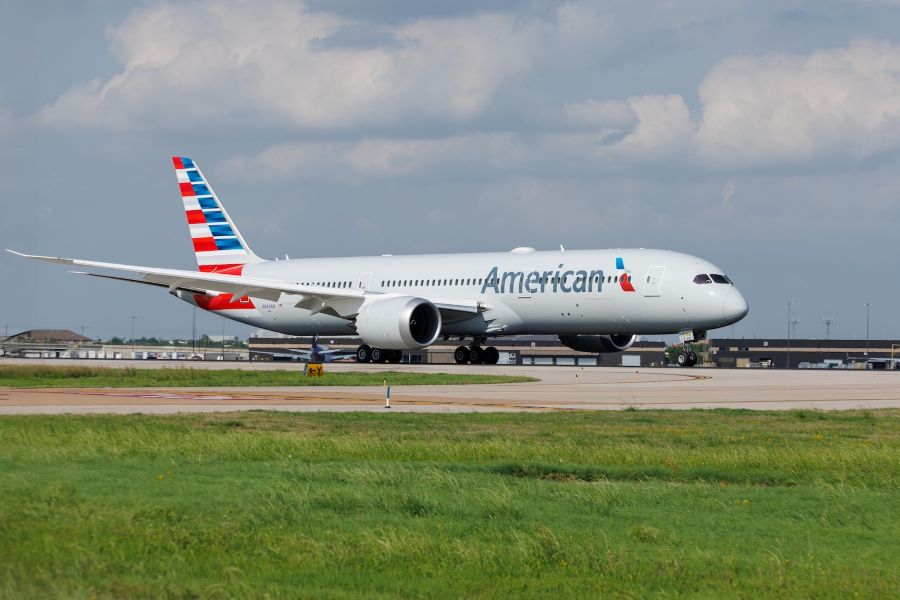
When you’re booking a flight, you might spot a little checkbox asking if you want to “offset your carbon footprint.” It’s not just for show. These programs can make a difference—if you know what you’re buying and what the airline actually does with your money.
How Carbon Offsetting Works
On paper, carbon offsetting sounds simple. You (or the airline) pay into a program, and that money goes to projects that reduce or capture greenhouse gases somewhere else. It’s a bit like hiring someone to plant trees or build clean energy projects to cancel out your own emissions from flying.
Some airlines focus on renewable energy—think wind or solar. Others invest in forest conservation, landfill methane capture, or even things like cleaner cookstoves for communities. Sometimes, you’ll see an option at checkout: Pay $8 to offset your flight’s carbon emissions. It’s usually voluntary, though a few airlines bake it into the price.
I remember seeing this on a budget airline and thinking, Is this just greenwashing? But reputable programs actually get checked by third parties, so it’s not just a money grab. Still, you need to dig a bit: Where does your money go? Does the project actually help fight climate change now, not just someday in the future?
Types of Airline Carbon Offset Programs
You’ll quickly notice that airlines run their carbon offset programs in a few different ways:
- Voluntary programs: You can choose to pay extra when booking or later.
- Automatic offsets: Some airlines pay for offsets themselves on certain routes or classes.
- Third-party partnerships: Airlines might team up with outside organizations like Cool Effect or Gold Standard.
- Project variety: Some stick to one project. Others let you pick—renewable energy, cookstoves, reforestation, and more.
Here’s a quick cheat sheet:
| Type | Who Pays | Common Projects |
|---|---|---|
| Voluntary | Passenger | Forests, solar, wind, cookstoves |
| Automatic | Airline | Forests, methane capture |
| Third-party | Airline/You | Multiple (certified) options |
One thing I always check: Can you actually see what project you’re supporting, and is it certified by a trusted group? Some airlines make this super clear; others hide it behind endless menus and fine print.
The Role of Carbon Offsets in Aviation
Let’s be real: flying is one of the toughest climate problems out there. Planes pump out a ton of emissions, and while cleaner engines and sustainable fuels are coming, they’re not a magic fix—at least not yet. That’s where carbon offsets step in. They let airlines and travelers do something now, while we wait for tech to catch up.
Sure, sometimes offsets are just a way to feel less guilty. But when they’re done right, they help fund projects that wouldn’t exist otherwise. The thing is, offsets shouldn’t be an excuse to ignore the rest of your carbon footprint. Airlines still need to cut emissions at the source.
If you travel for work or fun, think of offsets as one tool in your kit. They’re not perfect, but picking a solid program is better than nothing—and it’s a start toward cleaner skies.
Top Airline Carbon Offset Programs Compared
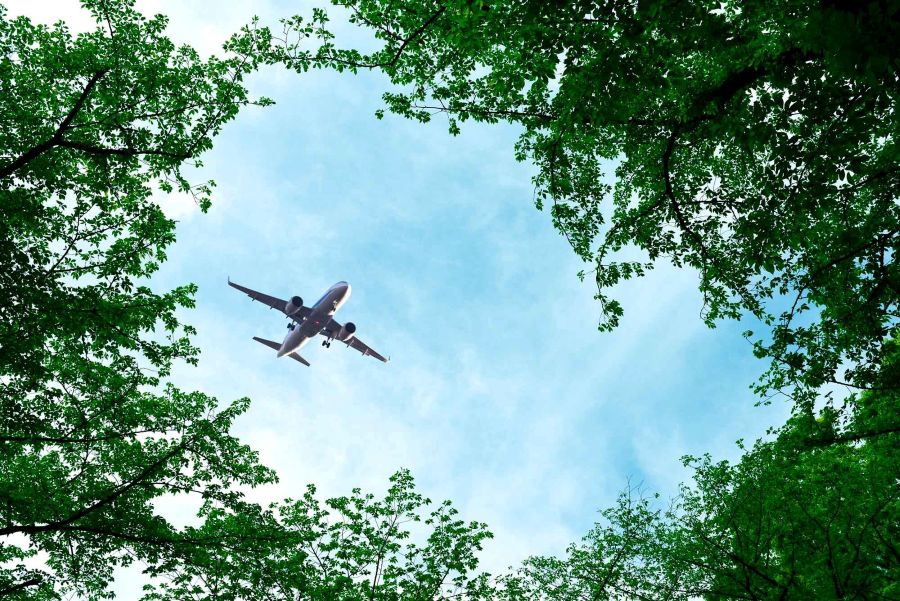
Choosing an airline with a real carbon offset program isn’t just about ticking a box. It’s about whether your miles actually drive change. Let’s look at how Delta, United, and British Airways stack up.
Delta: Sustainability Initiatives and Performance
Delta claims to be the “first carbon-neutral global airline,” but what does that mean for you? They’ve set a goal for net-zero emissions by 2050, and since March 2020, they’ve promised carbon-neutral flights.
What stands out is that Delta bundles offsetting into the ticket price—you don’t have to add it on yourself. They invest in a mix of projects: U.S. reforestation, renewable energy, landfill methane capture, peatland protection in Indonesia. You can even look up their partners, which is refreshingly open compared to some airlines.
But here’s my gripe: they don’t really break down how much of your fare goes to offsets. I’ve flown Delta plenty since they started this, and you never see the details. Still, at least you’re part of something bigger, not just a marketing ploy.
United Airlines: Commitment to Net-Zero
United has become the loudest U.S. airline pushing for net-zero by 2050—and they’re not just buying offsets. What’s different? Their program leans hard into new tech: sustainable aviation fuel (SAF), direct air capture, and yes, tree planting too.
They focus on “permanent” solutions (their word). If you log into your MileagePlus account, you’ll find a carbon calculator and can buy offsets for your own trips. It’s easy—my non-techy aunt figured it out. Projects span the U.S., Central America, even Indonesia.
United doesn’t just rely on your purchase. They match some contributions and invest in future fuels, not just trees. I give them credit for looking beyond quick fixes.
British Airways: Climate Action Progress
British Airways was actually one of the first to offset every U.K. domestic flight. If you’re flying from London to Manchester, your emissions are covered. Not many airlines do that. For longer trips, you can buy offsets if you want—totally voluntary.
They link with projects all over the world: rainforest protection in Peru, clean cookstoves in Africa. They show you what your offset pays for, with factsheets and stories, which is rare and, honestly, pretty cool.
Each year, they send out updates on the impact of their offsets, which adds a nice touch. But for non-U.K. domestic flights, you’ll need to check the box and pay extra if you want in. The upside? You actually see where your money goes—a rarity in this space.
Additional Leading Airlines With Carbon Offset Programs
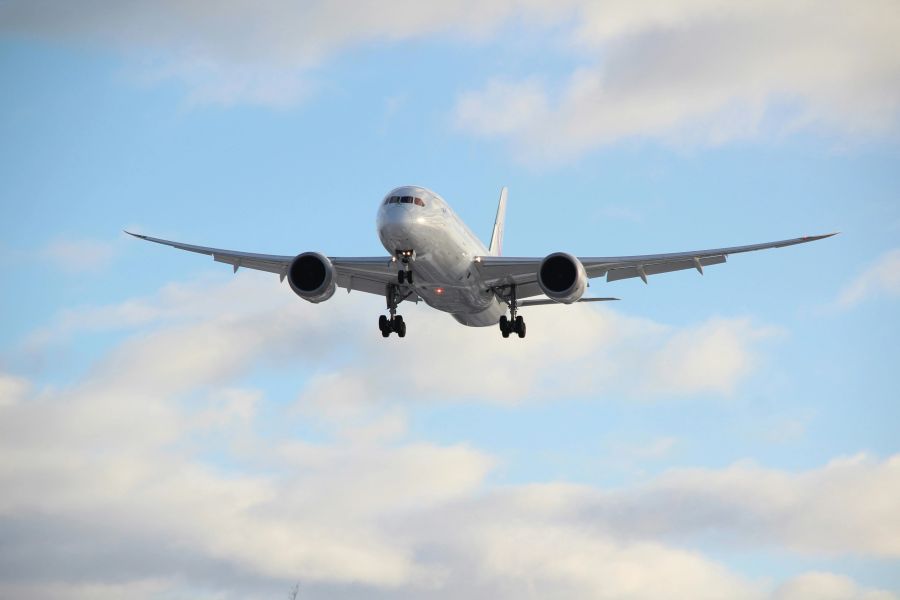
A few airlines are really going beyond the basics. They’re changing up their fleets, working with local programs, and putting real money into carbon reduction strategies.
JetBlue’s Carbon Reduction Strategies
JetBlue’s approach might surprise you if you’re used to airlines doing the bare minimum. They don’t just give you a checkbox at checkout and call it a day. Since 2020, JetBlue has offset 100% of CO2 from their domestic flights.
So what does that look like?
You’re flying with an airline that’s actually trying to balance out its emissions, supporting projects like forest conservation, landfill methane capture, and renewable energy. Offsets are baked into the brand, not an afterthought.
JetBlue also invests in sustainable aviation fuel (SAF). It’s not everywhere yet, but they’re using it on flights out of New York and L.A. I chatted with a JetBlue rep once, and she said, “We know it’s not perfect, but someone’s gotta start.” That’s the attitude you want—action, not just talk.
Qantas and Regional Leadership
Qantas leads the way in the Asia-Pacific with a start-to-finish approach. When I flew between Sydney and Melbourne, their offset calculator was front and center. You could see exactly which projects your money would support—reforestation in Australia, renewable energy in India, you name it.
They claim their Fly Carbon Neutral program is among the world’s largest. Sometimes, they’ll even match your purchase dollar for dollar. That’s rare. It doesn’t feel tacked on—you get transparency and choice.
Qantas also talks openly about sustainable aviation fuel trials and fleet planning. They don’t pretend offsets are a cure-all. If you’re heading to Australia, you’ll actually see where your offset dollars go.
Air New Zealand’s Fly Greener Program
Air New Zealand keeps things simple with its Fly Greener Program. On domestic flights, you can add a carbon offset to your ticket for just a few bucks—less than your airport latte, honestly.
What’s cool is where the money goes. They invest in local projects: restoring native forests, protecting wetlands, that kind of thing. I once saw a promo on board with kids planting trees—it felt way more real than the usual generic stock photos.
You can use their online calculator to check your carbon impact and offset after booking, too. That flexibility matters. They keep the program visible and jargon-free. Fly Greener feels like it’s made for regular travelers, not just hardcore eco-nerds.
Types of Carbon Offset Projects Supported by Airlines
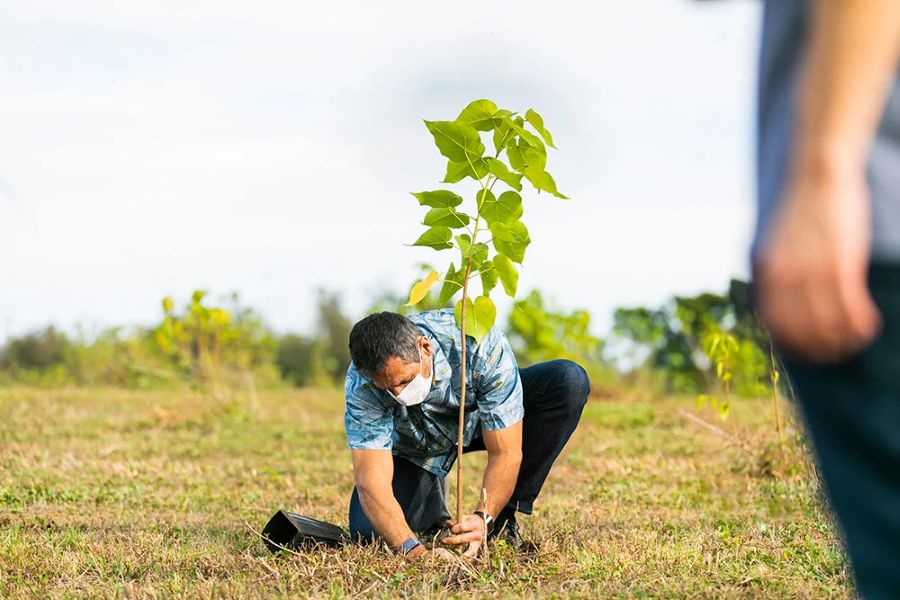
When you book a flight and choose to offset, your money goes to real projects fighting greenhouse gases. These aren’t cookie-cutter programs—airlines pick from a surprisingly wide range, each with unique goals and benefits depending on where and how they work. You’ll usually see things like protecting forests, building renewable energy, or supporting smart resource use in local communities.
Forest Conservation and Reforestation
You’ve probably seen airlines hyping reforestation or forest conservation on their sites. These projects either plant new trees or protect forests from being chopped down. Both are valuable, but they’re not quite the same.
Reforestation means planting native trees in places that were cleared, hoping to restore the ecosystem. Forest conservation is about protecting big areas of existing forest, keeping carbon locked in trees and soil.
Some of the best offset stories I’ve heard come from places like Costa Rica or Indonesia. Local communities get involved, managing forests and creating jobs. Well-run forestry projects can boost biodiversity, not just suck up carbon.
Renewable Energy Projects
Plenty of airlines put your offset dollars to work funding renewable energy projects—think wind farms, solar panels, and even small-scale hydropower. These projects step in to replace or reduce the need for fossil-fueled power plants.
I remember wandering around a wind farm in southern Spain, knowing a European airline’s offset program helped make it possible. Standing beneath those enormous blades, I felt oddly small. But every single turn of those turbines means there’s just a bit less coal burned somewhere else.
Over in parts of Asia and Africa, solar panel projects can transform daily life by bringing electricity to entire villages for the first time. So, when you buy that offset, you’re not only shrinking your share of airline carbon—you’re also helping real people get cleaner, more reliable energy.
Energy Efficiency Initiatives
Ever come across clean cookstoves? They pop up surprisingly often in airline-backed offset portfolios. Energy efficiency projects are all about helping people use less fuel—at home, on the farm, or at work.
Take those new cookstove programs in rural Kenya or India. Old, smoky stoves get swapped for cleaner, more efficient models, cutting down on wood or charcoal use. The upside: less smoke inside (which is huge for health), and fewer trees sacrificed for fuel. Some major airlines have really thrown their weight behind these efforts.
You’ll also find projects upgrading factory equipment, improving insulation, or making irrigation systems more efficient. Tree-planting might get all the attention, but honestly, efficiency projects can shrink emissions faster than most folks realize.
Community-Based and Innovative Projects
If you’re someone who wants your travel to do some good for local communities, not just the planet, take a look at the community-based and innovative projects airlines now back. These go well beyond the usual solar panels or tree-planting.
One that sticks with me: community conservation projects that protect endangered wildlife or boost ecotourism. When families have a reason to keep forests healthy, those forests are far more likely to stay put. Some programs even bring wetlands back to life—those are sneaky, underrated carbon sinks.
Don’t skip over the really new stuff either, like biochar projects (which stash carbon in charcoal), methane capture from landfills, or city-driven recycling programs. Airlines are starting to get creative with their offsets, and you might find one of these projects closer to home than you’d expect.
How Airlines Calculate Carbon Emissions

Airlines don’t just guess your CO2 emissions—they use a mix of detailed data, specialized calculators, and a bit of industry math. Getting these numbers right matters for the planet and your wallet, especially if you’re thinking about offsets.
Methods and Tools for Emissions Calculation
There’s a lot more under the hood than most travelers realize. Major airlines rely on emission calculators from industry groups (like the ICAO Carbon Emissions Calculator) or their own carbon footprint tools.
These tools factor in mileage, aircraft model, fuel type, and sometimes more. Some airlines even have custom calculators on their websites, letting you plug in your trip and see your impact—sometimes in almost too much detail. The first time I tried one, I’ll admit, seeing my CO2 tally left me a bit uneasy, but also a little more aware.
Some airlines turn to third-party calculators, Excel-based spreadsheets, or more advanced models to crunch the numbers. The bottom line: they all aim to estimate your flight’s greenhouse gas emissions as accurately as possible.
Factors Impacting Carbon Calculations
Airlines juggle a bunch of variables to get those numbers right. Aircraft type matters—a newer plane usually burns less fuel, so it produces less CO2 on the same route.
A few other things sneak in:
- Passenger load: Full flights are more efficient per person.
- Distance flown: Short flights burn more fuel per mile (takeoffs guzzle the most).
- Cargo load: Some calculators split emissions between passengers and cargo.
- Route specifics: Direct flights versus connections can change the math.
Sometimes, airlines even factor in weather, flight speeds, or how long the plane sits taxiing. It’s not a perfect science, but it explains why two calculators might give you different numbers for the same trip.
Quality Standards for Carbon Offsets

Not every carbon offset is created equal, especially when airlines are involved. Some programs stick to tough international standards, while others fall short and might not move the needle for the planet.
Gold Standard and International Certification
When airlines hype “high-quality” offsets, they’re usually talking about ones certified by respected groups. The Gold Standard is a big one—set up by environmental organizations to make sure projects actually reduce emissions, not just shuffle the problem elsewhere. If you want your travel to count, look for this certification.
I’ve seen plenty of airlines offer random projects as offsets, but when you spot the Gold Standard, Green-e, or Climate Action Reserve logos, you’re onto something more legit. Here’s what sets them apart:
- Independent verification: Auditors check if the project delivers on its promises.
- Transparency: You can look up the project and read reports yourself.
- Community benefits: Good offsets help local people or wildlife, not just carbon stats.
If a project carries these badges, it’s jumped through some serious hoops—so you don’t have to just trust the marketing.
High-Quality vs. Low-Quality Offsets
This is where things get a bit murky. Airlines love to toss around words like “offset” and “carbon neutral,” but not every offset is worth your cash. The best ones are additional—meaning the emissions cut wouldn’t have happened without your purchase. If the project was going ahead anyway, it’s not really offsetting your flight.
Look for projects that are permanent (think reforestation that’s protected for decades) and that get monitored and verified over time. I get suspicious when I see offsets priced super cheap. Bargain-basement offsets usually mean they aren’t making much of a dent, or it’s nearly impossible to prove the savings are real.
Transparency, actual impact, and ongoing checks matter. If you can’t find out who’s behind the project or what it’s accomplished, that’s a red flag. Some airlines now publish lists that compare offset options, but you still need to do a bit of digging if you really care about the environment. Don’t stop at the label—poke around for the details.
Airline-Supported Climate Solutions Beyond Offsetting
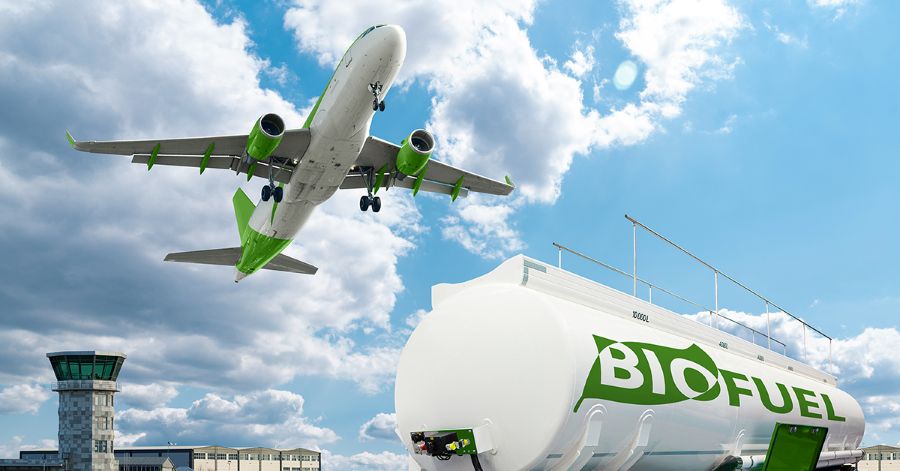
Airlines aren’t just banking on offsets these days. More carriers are tackling emissions by investing in greener fuels, flying newer jets, and even cutting down on cabin trash.
Sustainable Aviation Fuel (SAF) Investments
You’ve probably seen the buzz around “sustainable aviation fuel,” or SAF. This isn’t your standard jet fuel—it can be made from used cooking oil, algae, or even trash. Using SAF can slash a flight’s carbon footprint by a pretty hefty margin, though it’s not totally “clean.” Airlines like United and American are pouring money into SAF research and snapping up as much as possible, hoping costs will drop as production grows.
I actually flew on a SAF-blended flight with United, and honestly, the cabin smelled the same, but I felt a bit better knowing it was a step in the right direction. The hitch? SAF is still pricey and suppliers are scarce. Still, every gallon helps.
Some current SAF feedstocks:
- Used cooking oils
- Non-edible plants (like switchgrass)
- Municipal solid waste
Fuel-Efficient Aircraft and Fleets
Ever flown on a shiny new Dreamliner or Airbus A350? They’re quiet, but more importantly, they burn way less fuel than older jets. Lightweight materials, sleeker shapes, and those odd-looking wingtips all help airlines squeeze more miles out of every gallon.
Burning less fuel per trip means less CO2. Airlines like Delta and Southwest have retired older, thirstier planes in favor of new models. I remember flying on an old MD-80—it sounded like a tractor and guzzled fuel. Now, you barely see those relics around. Major airlines are pretty focused on making their fleets as low-emission as possible.
Key benefits of new aircraft:
| Feature | Advantage |
|---|---|
| Composite structures | Lighter weight, less fuel |
| Advanced engines | Cleaner, more efficient |
| Aerodynamic design | Improved range, comfort |
Waste Minimization Initiatives
Ever notice the mountain of cups, wrappers, and peanut bags stacking up during a flight? Airlines are finally paying attention to how much waste piles up, even on short hops. Alaska and JetBlue, for example, are switching to compostable cups, wooden stirrers, and encouraging you to keep your can instead of using extra plastic.
I try to help out by saying “no thanks” to single-use stuff on board and bringing my own bottle. It feels small, but when airlines move to bulk snacks, recycling, and less plastic, it adds up fast across millions of flights.
- Compostable utensils are showing up more often.
- More recycling bins are popping up in terminals and even on board.
- Some airlines have even tested “zero waste” flights just to see what’s possible.
These efforts aren’t flashy, but honestly, every bit less trash you make up there is one less thing to deal with on the ground.
Evaluating Effectiveness and Criticisms
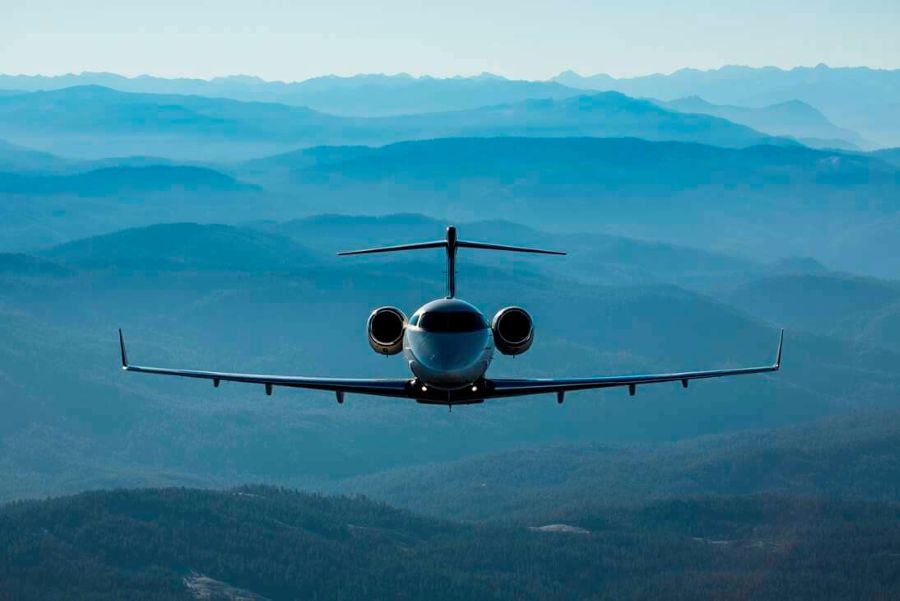
Carbon offset programs in aviation sound promising, but they stir up plenty of debate. They can make a real difference, but people keep asking if buying offsets truly cleans up the industry or just lets it keep polluting.
Impact on Global Warming and Climate Change
You’d think that paying extra for a carbon offset would really make a dent in global warming, right? Sometimes, yes. Airlines use that money to invest in projects that pull carbon dioxide out of the air, like tree planting, or in efforts that stop emissions elsewhere, like building clean energy.
But here’s the catch: these projects don’t always balance out the pollution planes dump into the sky. Aviation burns a ton of fossil fuels way up high, making the emissions even worse for climate change. Offsetting helps—but only when it’s done right and as part of a bigger push to cut emissions at the source.
Some people argue we should focus more on making flights themselves cleaner, not just counting on trees or wind farms in another country. Real carbon neutrality means matching every ton emitted with a genuine, measurable reduction somewhere else. That’s a tall order, honestly.
Common Criticisms of Airline Offsetting
Carbon offsets have their fair share of skeptics. Some folks think offsets are an “easy way out” for airlines. Instead of cleaning up their own mess, they just pay a bit and call it good.
Travelers I talk to often wonder if their offset money really helps—or if it’s just slick marketing. Some airlines aren’t clear about where the money goes, and that only breeds more distrust.
Critics also point out that focusing on offsets can distract from finding better, direct solutions. Instead of making planes cleaner, some airlines just keep flying old, dirty jets and use offsets to paper over the problem. That bugs a lot of people, me included.
Verification and Transparency Challenges
Here’s the real sticking point: you can’t always know what happens with your offset. Verifying that projects deliver the promised impact is a huge challenge.
Many offset programs don’t share clear proof that your money funds real, effective projects. Sometimes, the same forest or wind farm gets “sold” as an offset more than once. That’s just not right.
Transparency matters. If airlines want you to pay extra for offsets, they need to show you the projects, partners, and actual climate results in black and white. Only then do you really know if your dollars are fighting environmental damage—or just padding someone’s bottom line.
Passenger Engagement and Offset Options

If you’ve ever booked a flight and seen the “carbon offset” option, you might wonder what it really means—or if it’s worth it at all. The way you engage with these programs, and the tools airlines use, can make a real difference in how much you help shrink your impact.
How Travelers Purchase Carbon Offsets
When you’re booking flights online these days, you’ll probably notice a carbon offset box pop up at checkout. Airlines like Delta and British Airways give you the option to pay a bit extra to fund projects that try to balance out your share of emissions.
Some carriers team up with organizations like The Nature Conservancy or Pure Leapfrog. Sounds pretty noble, right? But you’re not just tossing money into a black hole.
These offsets usually fund things like reforestation, renewable energy, or protecting local wildlife habitats. That’s the idea, at least.
I like when certain airlines actually show you what your donation supports, sometimes with photos or specific project locations. That feels a lot more tangible than just “planting a tree somewhere.”
It gives you some sense of control over your trip’s environmental cost—even if, let’s be honest, the difference might be modest.
Some airlines even offer subscription-style programs if you fly often, so your offsets can stack up every trip. Not every company has this, but I’m seeing more options pop up every year.
Carbon Offset Calculators for Consumers
Let’s chat about these “carbon calculators.” Most big airlines include one right on their booking page, promising to tally up emissions for your specific route.
You plug in where you’re flying from and to, and it spits out your estimated carbon footprint—usually in kilograms or tons. Honestly, some tools are much better than others.
A few calculators are pretty fun to use—almost like playing with a budget app. Others make you jump through hoops, and sometimes the numbers seem suspiciously low.
Airlines sometimes reveal just enough to look good, but they don’t always show the whole picture. I’ve seen calculators that skip over things like connecting flights or the class you’re flying—economy, business, first class, all that matters.
If you want to travel more sustainably, pick airlines that actually let you dig into the details. The best calculators break down emissions per passenger and even let you compare the impact of different flights.
This way, you can make choices that match your conscience, not just your schedule. Don’t be afraid to double-check with third-party footprint tools for a second opinion; it’s your right to know what you’re really offsetting.
Notable Organizations and Partnerships in Airline Offsetting
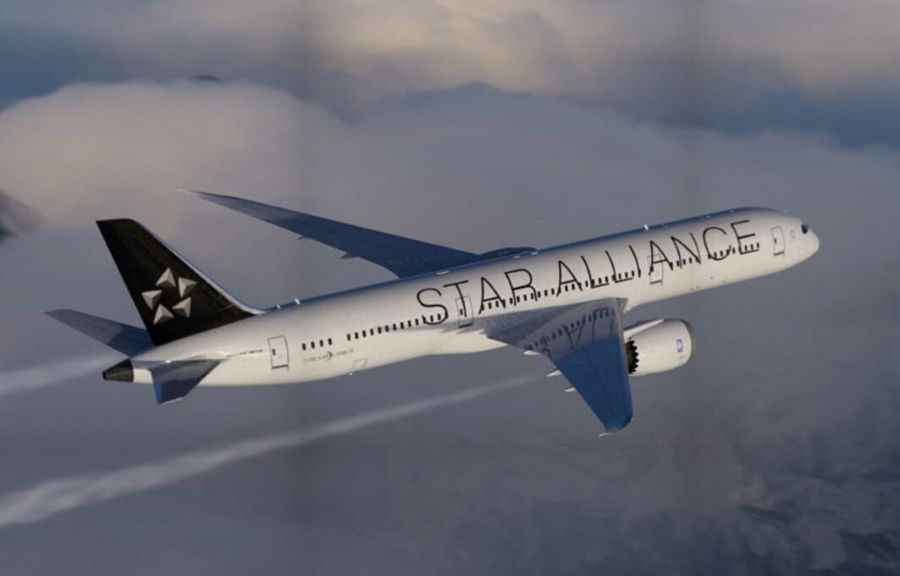
Once you start digging into airline carbon offsets, you’ll see it’s not just airlines doing the work. Nonprofits and specialized companies play a huge role, making offsetting more transparent—and, well, a lot less confusing.
Conservation International and Nonprofit Collaboration
Conservation International stands out here. They don’t just plant a few trees and call it a day—they actually work with airlines to set up long-term conservation projects.
If you’ve ever flown with an airline offering flight offsets, there’s a good chance a group like this is behind the scenes. I remember chatting with a flight attendant about their offset partner, and it turned out it wasn’t just a name on a receipt—it was real people fixing real places.
These nonprofit collaborations focus on measurable results. Your offset doesn’t just vanish into some mystery fund.
Instead, it might support rainforest protection, wildlife conservation, or reforestation. This gives you a direct connection to projects that matter.
It’s not perfect—some airlines don’t pick partners wisely, but that’s a story for another time.
Third-Party Offset Providers: Cool Effect, Carbon Fund, Chooose
When airlines don’t run their own offset programs, they often turn to third-party providers. Names like Cool Effect, Carbon Fund, and Chooose show up everywhere now.
These companies exist to find and verify projects that actually reduce carbon, rather than just talking a good game.
Cool Effect sticks to small, carefully checked projects. People love their transparency—you can read stories from project workers right on their site, which adds a personal touch.
Carbon Fund has been around forever (or at least it feels that way). They help airlines set up larger offsets, covering everything from renewable energy to forest management.
Chooose makes the whole process interactive. You get to see the real impact of your dollars, and they prioritize fun, engaging carbon tools for travelers.
I signed up for a Chooose offset before a long-haul flight just to see where my money went. They sent little updates and stats—pretty cool, especially if you geek out about data.
If your airline gives you a choice of offset providers, spend a few minutes comparing. The differences aren’t always obvious, but they matter in the long run.
A bit of research can make your flight feel a little lighter on the conscience.
Regulatory Schemes and Global Frameworks
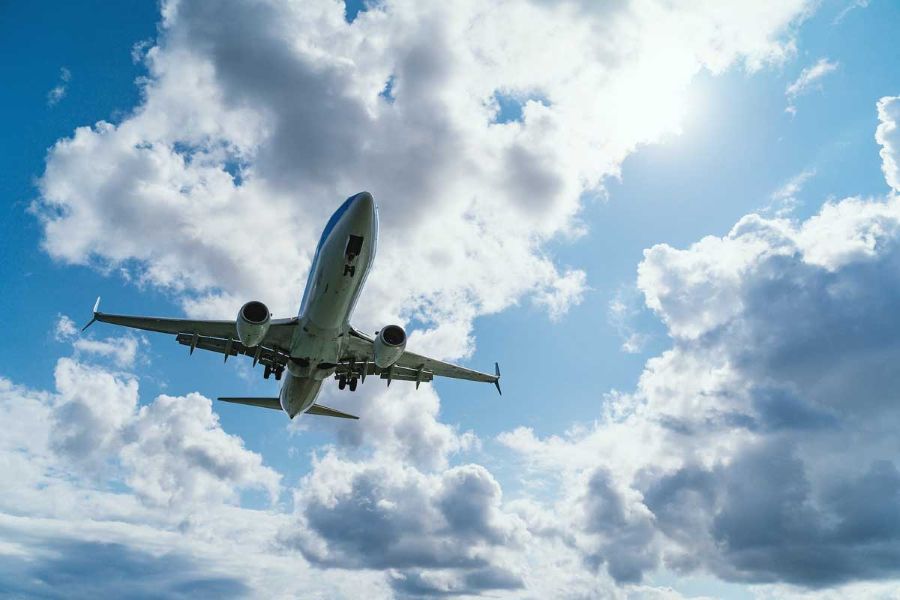
To really understand carbon offset programs for airlines, you have to dig into the rules that guide them. Some programs are mandatory, others are voluntary, and each one shapes how airlines act on emissions.
CORSIA: The International Standard for Aviation
If you’ve never heard of CORSIA, you’re not alone—most travelers haven’t. It stands for the Carbon Offsetting and Reduction Scheme for International Aviation, which is quite a mouthful.
The International Civil Aviation Organization (ICAO) put CORSIA together to keep CO2 emissions from international flights at 2019 levels. Airlines have to offset any extra emissions above that benchmark.
From my time stuck in airport lounges, I’ve seen this topic come up a lot—airlines now have to buy carbon credits if they go over their carbon budget.
The rules only apply to flights between participating countries, so not every flight falls under CORSIA (yet).
And if you’re wondering, no, the carbon offsets you buy yourself don’t count toward an airline’s obligations. CORSIA’s offsets come from approved projects, not the little trees you fund at checkout.
UN Sustainable Development Goals and Airline Initiatives
You’ve probably seen the UN’s Sustainable Development Goals (SDGs) pop up everywhere, but airlines are weaving them into their offset strategies more and more.
These goals—cleaner energy, less hunger, responsible consumption—go way beyond just cutting carbon.
Airlines now choose offset projects that also support these SDGs, hoping to boost their impact (and, let’s be honest, their image).
What’s interesting is the push for more than just “planting trees.” Some airlines support renewable energy in rural areas, clean cookstove projects, or wildlife conservation.
These aren’t just box-ticking exercises—they’re a nod to the fact that travelers care about broader benefits.
If you ask me, it’s a subtle shift: airlines want you to see offsetting as more than just a carbon math equation. They play up these projects in their branding because, let’s face it, people like to feel good about the flights they book.
Regional and Airline-Specific Innovations
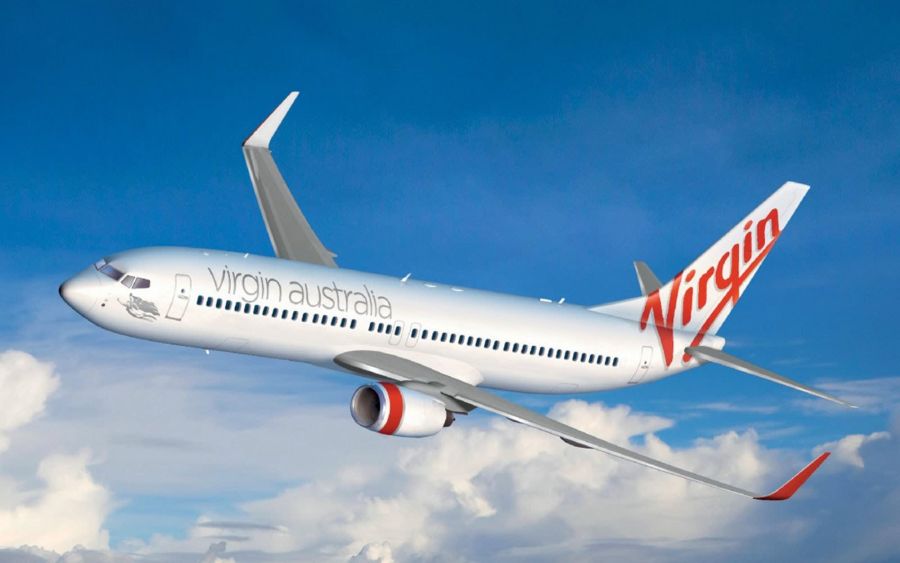
Different airlines carve out their own approaches to carbon offsetting. Some focus on emissions close to home, while others lean into global solutions or partner with big-name agencies.
Virgin Australia’s Local Strategies
Virgin Australia does things a bit differently down here. They really focus on keeping their offset projects local, which I honestly find refreshing.
When you buy a carbon offset from them, chances are you’re supporting reforestation or biodiversity initiatives right in Australia.
Their partnerships with local environmental groups aren’t just for show—these projects can restore native land or help threatened species.
I once flew with them and actually got an update on where my fees were helping, and it made me feel just a bit less guilty about my flight.
Plus, you can see your trip’s impact right at booking—just tick a box, and you’re in.
Jetstar’s Carbon Neutral Initiatives
Jetstar keeps things simple when it comes to carbon neutrality. You can offset your portion of flight emissions at the click of a button.
If you travel domestically in Australia, you’ll see their carbon offset option every step of the way (it’s subtle, not pushy).
Most of their investment goes into Australian projects—landfill gas capture, forest management, that sort of thing.
I’ve talked with a Jetstar rep who said most people want local offsets, and honestly, I get it. There’s something reassuring about helping out in your own backyard.
Prices for offsets are generally quite low per flight, so you don’t have to spend big to do your bit.
EasyJet’s Approach to Carbon Neutrality
EasyJet made headlines a few years ago when they decided to offset emissions for every flight. They now automatically offset emissions for every passenger.
I remember people debating if it was a real difference-maker or just a green marketing move. Personally, I think it’s better than nothing.
They partner with big organizations to support renewable energy, reforestation, and clean energy worldwide—not just in the UK or Europe.
Offsets are built right into your ticket price, which is handy if you’re forgetful (I know I am). But some critics say automatic offsets are less personal, and people might get too comfortable flying without thinking about the impact.
Alaska Airlines’ Sustainability Actions
Alaska Airlines takes a mixed approach—offsets are part of the plan, but they also push hard on using sustainable aviation fuel and reducing single-use plastics.
If you care about offsetting, you have to opt in. There’s a detailed calculator at checkout, so you can see exactly what your offset funds will support.
One thing I like about Alaska Airlines is their partnerships with Indigenous and conservation groups in the Pacific Northwest.
They try to tie sustainability to the places they serve, not just buy generic carbon credits. A friend of mine in Seattle raves about how visible their environmental projects are in the local press—and honestly, you feel it if you live up there.
American Airlines and Domestic Market Trends
American Airlines takes some big steps with offsetting, but it’s just one piece of a bigger domestic puzzle. They offer a voluntary offset when booking, but also run all sorts of fuel efficiency and aircraft renewal programs.
If you fly with them on U.S. domestic trips, you’ll notice they talk a lot about partnerships with major offsetting organizations.
Their main moves lately include investing in next-generation planes, which honestly save more carbon than offsetting alone ever could.
You don’t always feel their green efforts when boarding a short Dallas or Miami flight, but those behind-the-scenes investments matter.
If you want to offset your travel, you’ve got to remember to check the box—American won’t sneak it in unless you ask.
Frequently Asked Questions
When you’re considering carbon offset programs for airlines, there’s a surprising amount to weigh. How these programs work, what makes one more reliable than another, and whether your own efforts make a dent—all of these deserve real answers based on what actually happens out there, not just what’s in glossy brochures.
What factors should be considered when comparing airline carbon offset programs?
First, check if the program is transparent about where your money goes and what projects it supports. Some focus only on tree planting or renewable energy, while others expand to things like local community projects.
Look closely at what’s being promised and whether recognized organizations verify the projects. I always try to dig into how permanent and trackable those carbon savings are—there’s no point offsetting if emissions creep back in a few years.
How do the carbon offset programs of major airlines differ?
Airlines each take their own approach. Some, like British Airways and Delta, have fancy partnerships with global environmental groups.
You might find JetBlue supporting forestry projects or Lufthansa backing clean energy solutions. Costs and ease of use also vary a lot.
Some airlines roll the offset into the booking process, while others send you to a third-party site, which can feel like an extra hurdle.
Are there any independently verified airline carbon offset programs?
Yes, quite a few airlines use offset projects certified through standards like Gold Standard or Verified Carbon Standard.
These third parties keep everyone honest by checking that projects actually deliver what they promise.
But, from what I’ve seen, not every airline program gets full marks for independent verification. You still need to look for clear proof on their website or ask customer service before you click yes.
What innovative approaches have airlines introduced to effectively offset carbon emissions?
Some airlines don’t just stick to the usual tree-planting schemes. I’ve noticed a few teaming up with rewilding projects or even pouring money into tech like carbon capture—honestly, that sort of thing stands out.
Smaller airlines sometimes connect their offsets directly with local restoration or work to revive habitats for rare species. That feels so much more tangible and personal, doesn’t it?
Every now and then, you’ll spot an airline funding biofuels or even dabbling in direct air capture. It’s a bold move, and frankly, it’s about time more of them did.
How can consumers assess the impact of their travel with airlines offering carbon offset programs?
You’ll usually spot emission calculators on most airline websites, but let’s be real—some are much more thorough than others. I always double-check with an independent carbon calculator, just to see if the numbers line up.
After your trip, pay attention to what the airline does next. The top airlines actually send updates or reports showing what their offset projects achieved.
If you get those follow-ups, you can feel a bit more confident that your extra dollars didn’t just disappear into the void.
What are the most cost-effective carbon offset programs available for airline passengers?
Prices for carbon offsets bounce all over the place. It depends on your airline, the kind of offset project, and what’s happening in the carbon market that week.
From what I’ve seen, airlines that let you offset your emissions right when you buy your ticket usually charge less than third-party groups. Some smaller European carriers actually keep it simple and offer a flat, low fee for every flight.
But here’s the thing: don’t just chase the cheapest option. I’d always recommend digging into how those offsets work—are they actually making a difference, or just there for the marketing? Sometimes, paying a dollar or two extra means you’re supporting a program that genuinely helps the planet, not just your conscience.



